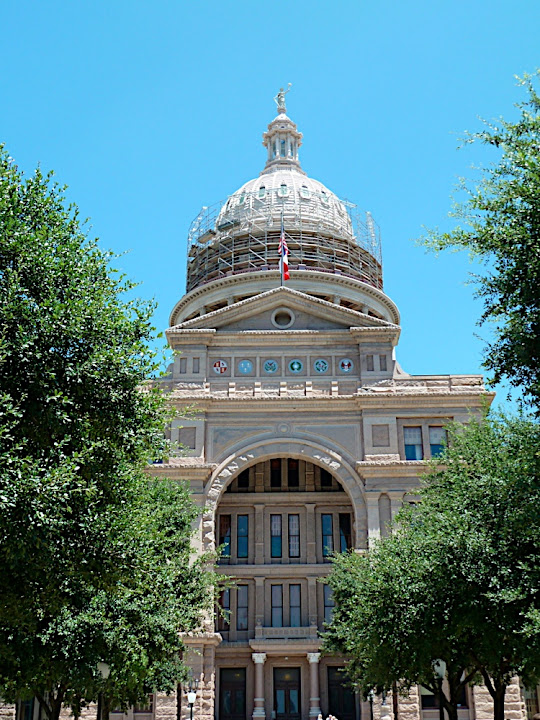rivalry
San Antonio and Austin appear to be poised for competition: Mexico’s northernmost city vs. live music capital of the world. Texan keep their serious businesses in Houston and Dallas. These two cities are supposed to be fun and quirky. Also Austin is supposed to be the Texas capital: the responsibility it does not take too seriously.
San Antonio has the River Walk. Austin - the Texas State Capitol. One city attracts tourists, the other - lobbyists. People spend their own money in San Antonio. Politicians spend taxpayers dollars in Austin. San Antonio is packed with hotels for every budget. Austin’s hotel base leaves some to be desired: overpriced chains encroach on downtown and run down motels on the outskirts.
San Antonio is an easy town to experience: you start your tour at the River Walk and by the time you are done you’ve found your prefect spot: be it a secluded restaurant, a busy bar or a tree-shaded sidewalk.
Austin requires effort to appreciate: walking under the bright hot sun down the street armed with a self-guided tour brochure is a challenge. Buildings are fine but could use shade of either trees or eaves.
I do not like to retrace my steps and I don’t really enjoy cities where a main drag is also the only attractive place in town. In San Antonio they were smart to design River Walk in a circular manner, so in theory you could just keep going forever. Austin groups its attractions along the letter L created by Congress Avenue and 6th Street. Every time you venture away from this approved shape some ugly reminder of a building pushes you back onto it.
Austin’s capitol building is modest in a typical Texan fashion. Modest in Texas means not outrageously big. So it’s only a couple of feet taller than the nation Capitol in Washington DC. By comparison Alamo, a Spanish mission that contributed to a Texas creation myth, is way too small for such a big state. The myth, roughly based on the Thermopylae pattern, is that freedom loving Texas were defeated by overwhelming Mexican forces lead by a Mexican general and dictator Santa Ana. Texans were, at least initially, trying to reestablish the Mexican liberal constitution of 1824. But ultimately the independence cause and later opportunity to be annexed by the big brother - US - seemed just too attractive to pass. Not least because it allowed to develop a slave-based, plantation economy. And offered a strong army to push Mexico south.
Thankfully none of the cities dwell on the past too much. In spite of being on the losing side of the Civil War, Texas became wealthy and proud on agriculture, trade and oil. It has the luxury of remembering only happy moments from its history.
In truth we haven’t given either city enough time to work its charms. We’ve arrived in San Antonio too late to tour the Alamo, we’ve left Austin too early to see the bats flying at dusk from underneath Congress Avenue Bridge. I enjoyed the River Walk immensely but Damian found San Antonio too touristy. Austin on the other hand was just waking up after Saturday night celebration. No danger we’ll move to either one any time soon.
